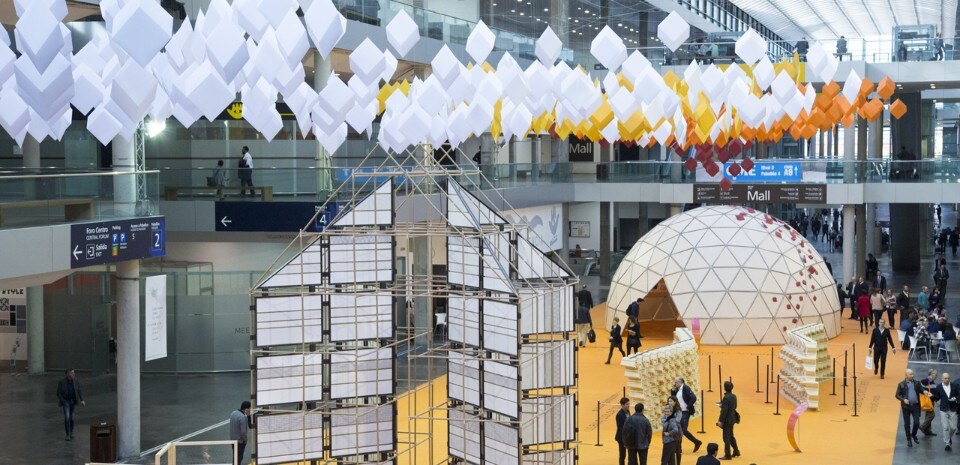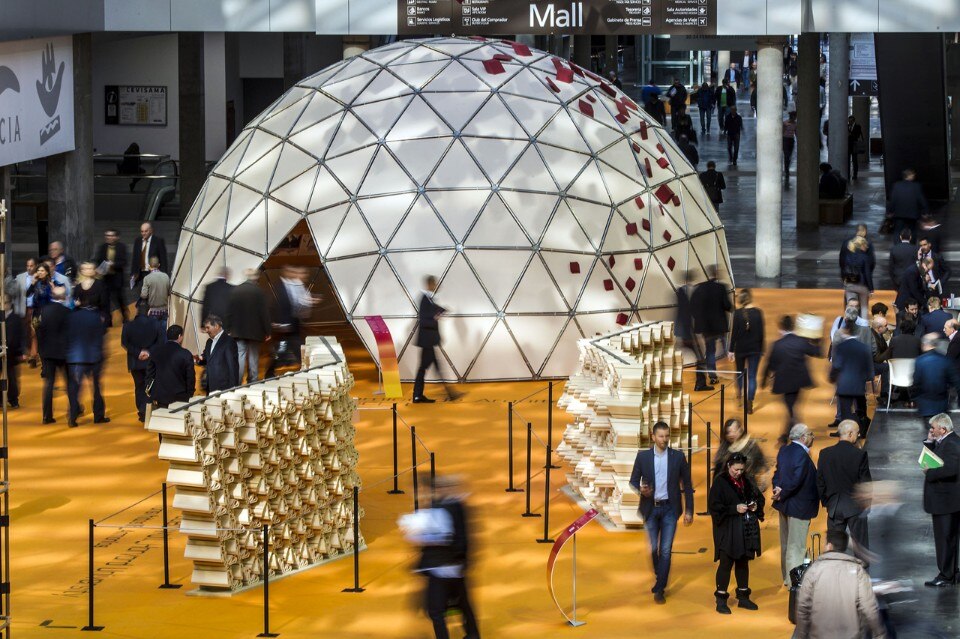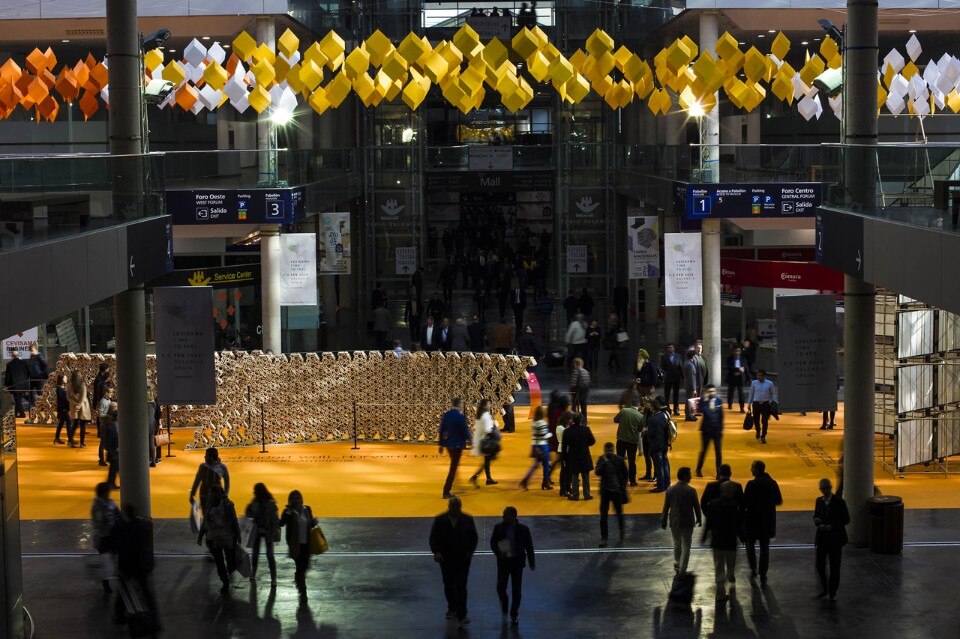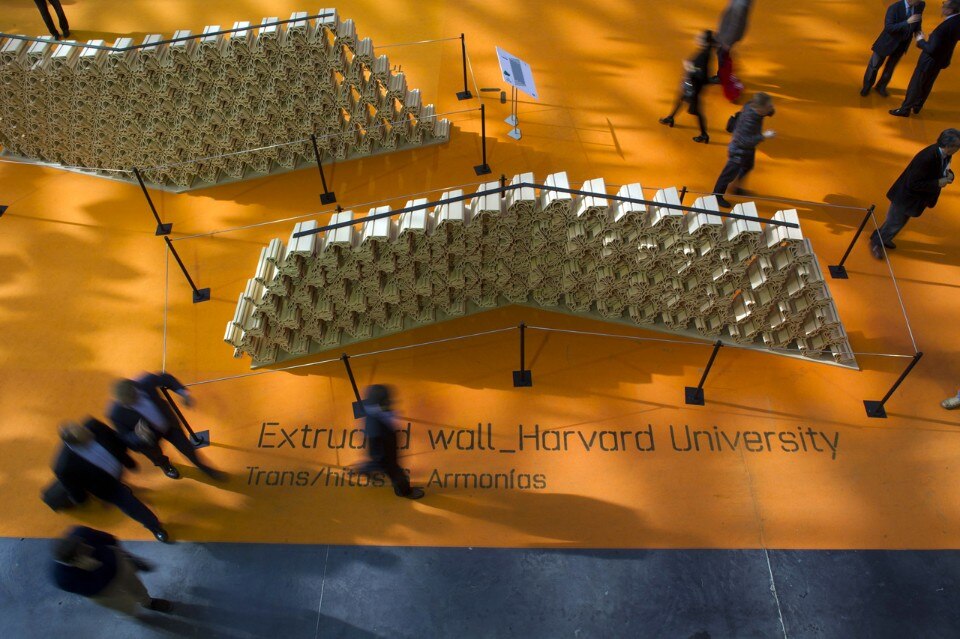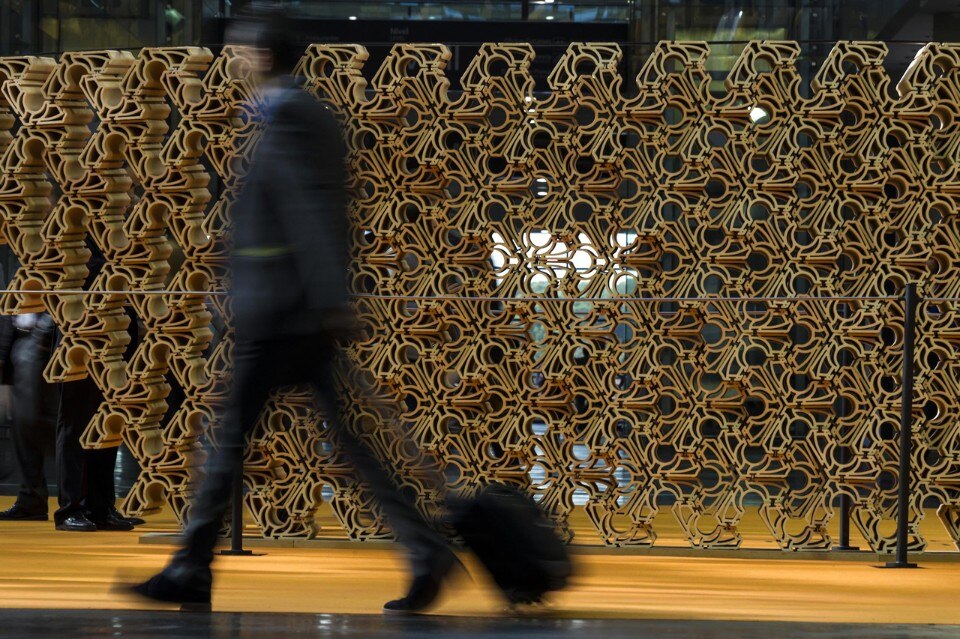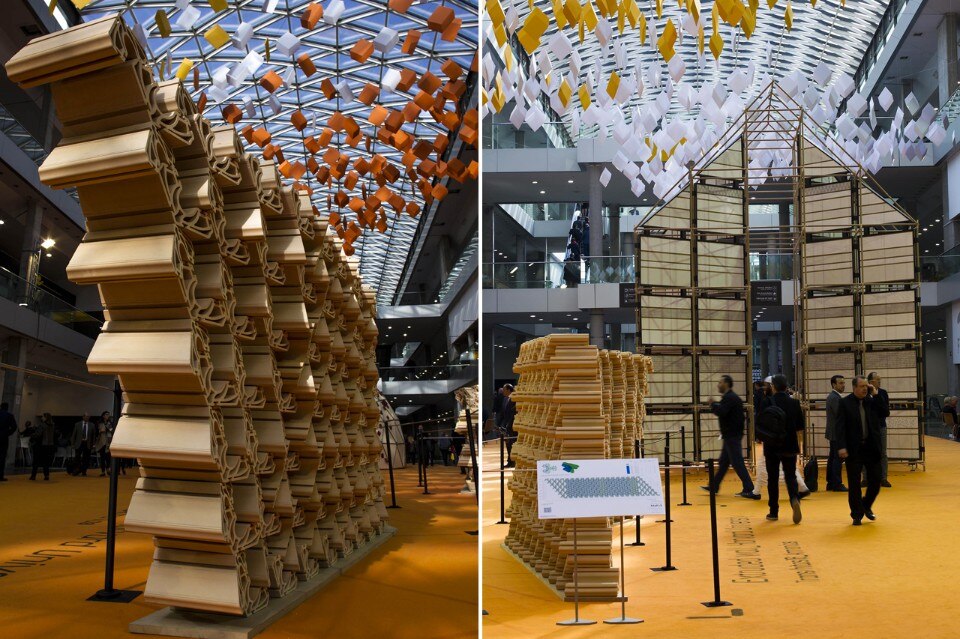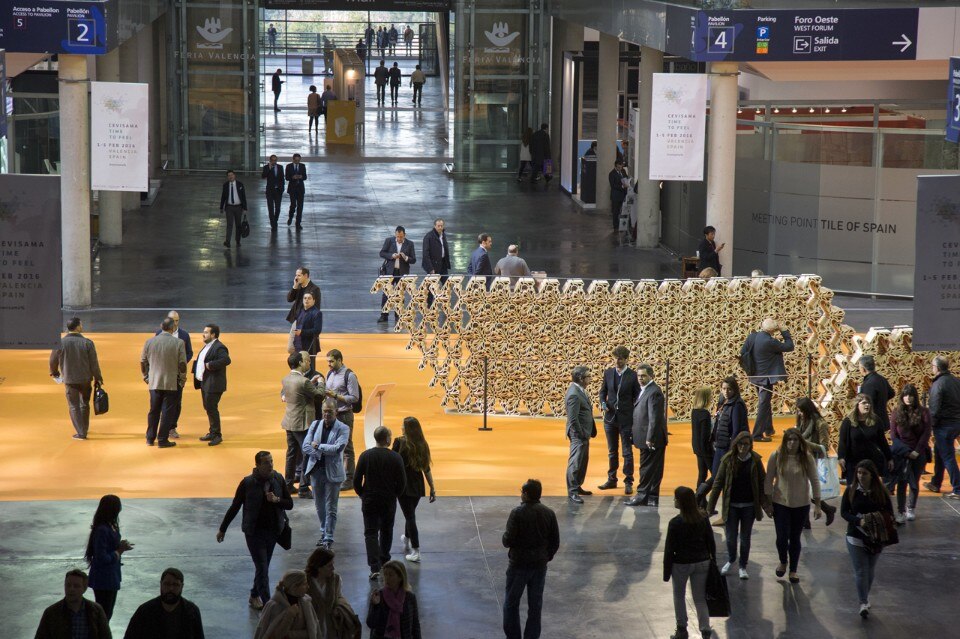
The Little House of Paper, by Mixuro studio, is the winner of the competition organised by Cevisama, Ascer, and ITC to energise the event, encouraging designers and architecture and interior design studios to put forward their ideas. The authors highlighted the idealisation embodied by the little paper house, the perfect house, a symbol. A call to attention is involved, as it is an icon, in addition to being a symbol of efficiency and sustainability, realised with materials respectful of the environment, which can be readily disassembled and gathered up for subsequent re-assembly elsewhere, quickly, at any time.
The structure holds ceramic pieces that do not come from a given manufacturer or are even of a particular type or model, generating a composition with different pieces, all of which are white, providing an overall texture.
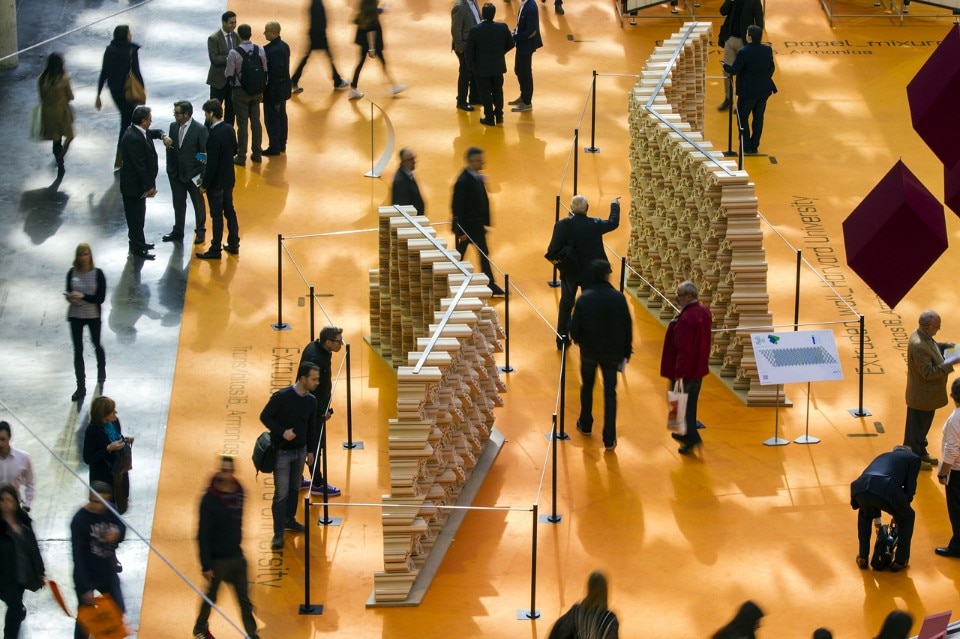

Trans/Hitos 2016
Harmonies


